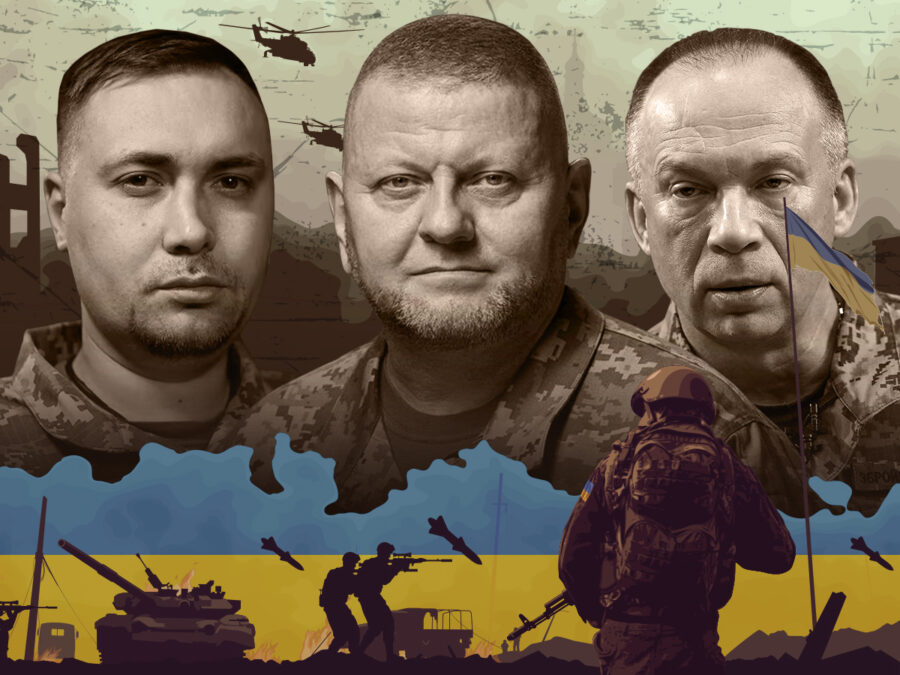
In recent weeks, three key figures in the Ukrainian military have publicly analysed the situation in Ukraine, each from a slightly different perspective.
Oleksandr Syrskyi, Commander-in-Chief of the Armed Forces of Ukraine in an interview with The Guardian said, that the Kremlin’s losses are three times higher than Ukraine’s and even more on certain fronts.’It’s very important for us to save the lives of our soldiers. We do not defend ruins to the death,’ Syrskyi said. He contrasted his fighting tactics with the Russians, who were known for sacrificing huge numbers of infantry to gain 100 to 200 metres.
Two and half years into Russia’s full-scale invasion, Ukraine’s Commander-in-Chief acknowledges that the Russians have far more resources. They have more of everything: tanks, infantry fighting vehicles, soldiers. He also pointed out that the Russian army has grown from 100,000 to 520,000 since the beginning of the full-scale invasion, and by the end of 2024, its number should reach 690,000. The figures for Ukraine were not made public.
According to the General Staff of the Armed Forces of Ukraine, since the beginning of the full-scale war, the Russian army has suffered more than 570,000 casualties. Syrskyi rejected to comment on President Zelenskyi’s words who claimed in February 2024 that 31,000 Ukrainian soldiers had been killed during Russia’s full-scale invasion.
In this exclusive interview Syrskyi admitted things were very difficult at the front. At the same time, he described Russia’s creeping victories as tactical ones – he described them as local gains rather than an operational breakthrough.
In an interview with the New Voice of Ukraine (NV), Ukraine’s Defense Intelligence (HUR) chief Kyrylo Budanov with regard to Russia’s war economy noted that there are shortages that will be difficult to deal with, but everything can be rebuilt. ’But the most important asset is a professional human resource, which will take many years to reconstitute. Let us be clear: they have lost their entire professional army by fall 2022. Now they are fighting with mobilized troops, with convicts, and anyone they can recruit.’
According to Budanov, the Crimean Bridge is a crucial point in terms of logistics to Moscow. ’It is a totemic symbol of occupation, its destruction will be much deeper and more important than just obliterating a cargo train with military equipment. There are thousands of military supply trains, but there is only one bridge’, he said. Crimea is no longer an ’unsinkable aircraft carrier’ for Russia, but it became a quite inconvenient territory. The Crimean Bridge has lost much of its practical value but remains a symbolic pillar of the Russian regime, Budanov noted.
On 21 July, Valerii Zaluzhnyi, Ukraine’s Ambassador to the United Kingdom and former Commander-in-Chief of the Armed Forces of Ukraine, gave a speech at The Royal United Services Institute (RUSI). He described the Russo-Ukrainian war as a war of transition.
’Referring to the events of 2022-2024 in the now ten-year war between Ukraine and Russia, we need to tell humanity honestly what is happening and what humanity must be prepared for. Free and democratic nations and their governments must wake up and think about how to protect their citizens and their countries. (…) Wars should be avoided! But if war does come, you must be prepared for it,’ Zaluzhnyi said, referring to the ancient Roman proverb ’Si vis pacem, para bellum’ – if you want peace, prepare for war.
According to Zaluzhnyi, preparedness for war should be viewed as a vast set of measures covering not only purely military aspects, but also every area where the state is active. ’Perhaps the most complex and most important component is societal readiness, based on honest and transparent communication between the government and people,’ he said.
He is convinced that a new stage in the forms and methods of warfare has begun, the ambassador noted in his speech adding that technologies are likely to be decisive in this war and, technology must ensure the sustainability of the Ukrainian nation.
It is difficult to say whether any of these three assessments will be relevant once the perspective of peace finally comes into focus. Meanwhile, the report by DeepState on 1 August notes that ’The enemy has occupied Tymofiivka and advanced near Krasnohorivka, Panteleimonivka, Ivanivka, Zhelanne, Vesele and in New-York.’ It also means that we will continue to shed tears over the victims.
Leave a Reply